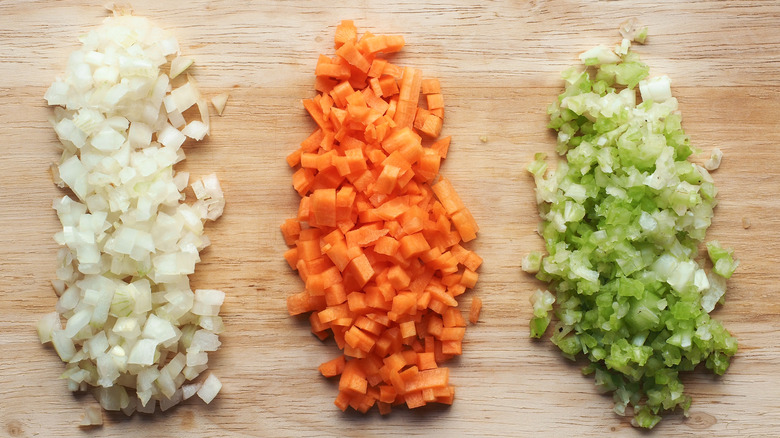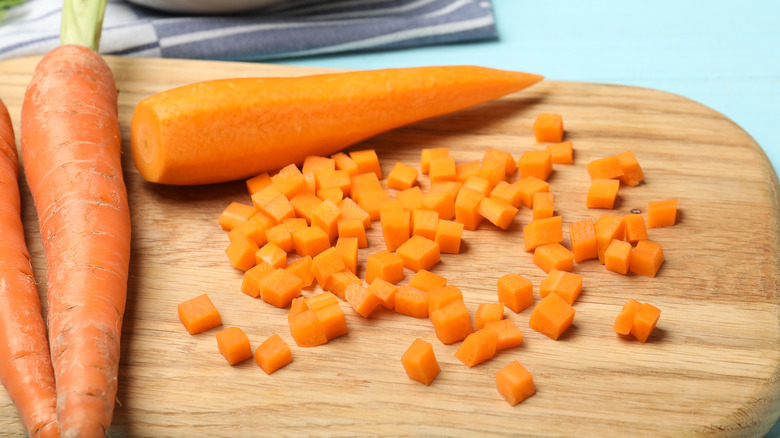What The Brunoise Knife Cut Is And When To Use It
Knowing how to do prep work properly by acquiring basic knife skills is the first step to upping your cooking game. But before can dice and slice, it's essential to have the right tools for each task. Don't be intimidated by the number and variety of knives out there: all you need is a starter knife set to get most jobs done effectively. This includes a chef's knife, paring knife, and serrated bread or tomato knife. However, if celebrity chef Alton Brown is to be believed, you'll also want to add a boning and nakiri knife to that set.
Once you've got your knives out (just be wary of the risk of pulling your blades tucked away in a drawer) and you have made sure that you've mastered the basics, you're ready to move on to more advanced techniques like the brunoise knife cut. Though the name of this cut is French and may sound intimidating, it's fairly simple once you get the hang of it.
When to use a Brunoise knife cut
If a recipe calls for a brunoise knife cut, it is just a fancy way of saying that a vegetable should be cut into small, precise, and uniform cubes that are either 3mm (regular) or 1.5mm (fine) in size, according to Cook's Info. The name is derived from the Brunoy commune in France, where the cut was popularized.
Though dicing vegetables will get you a similarly square result, the brunoise cut is even smaller and can be useful when making garnishes to sprinkle on top of finished dishes, per Fine Dining Lovers. You will typically see the technique mentioned when starting a deeply flavored dish with a mirepoix, which is a common seasoning base of carrots, celery, and onions for soups, pasta, and rich sauces. The small cubes allow for the maximum surface area of the veggies, which easily soften, and can be left with a slight bite or immersion blended.
Sturdier vegetables work best for this technique, as the cut is too small for juicy ones like tomatoes or pineapple; the most common veggies used with a brunoise cut are onions, carrots, celery, and peppers. For a successful brunoise, you will first need to make broad slices that are then cut julienne. When you have the long thin slices from the julienne, you can then hold them tightly together and cut off the small cubes for the brunoise — et voilà, you've got it!

